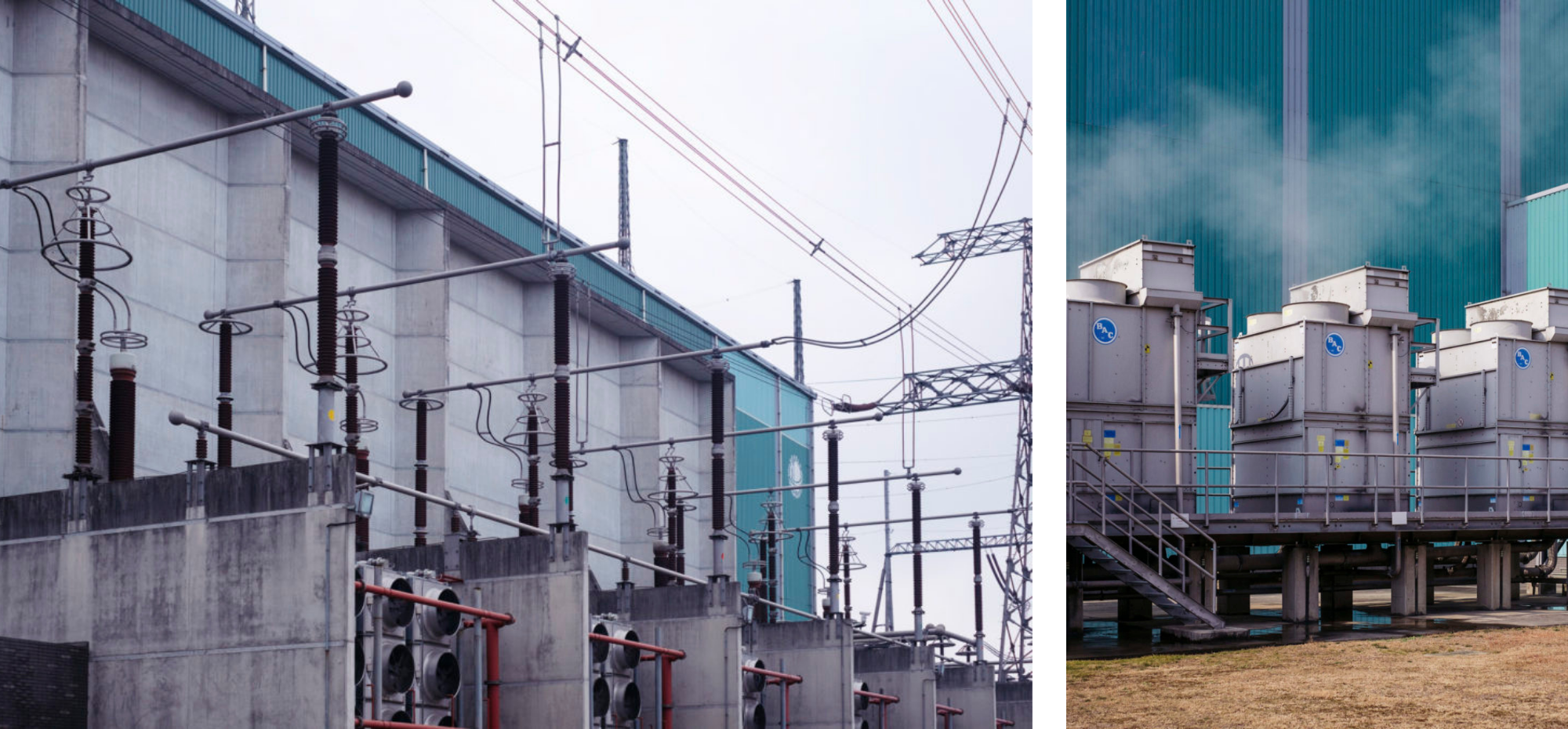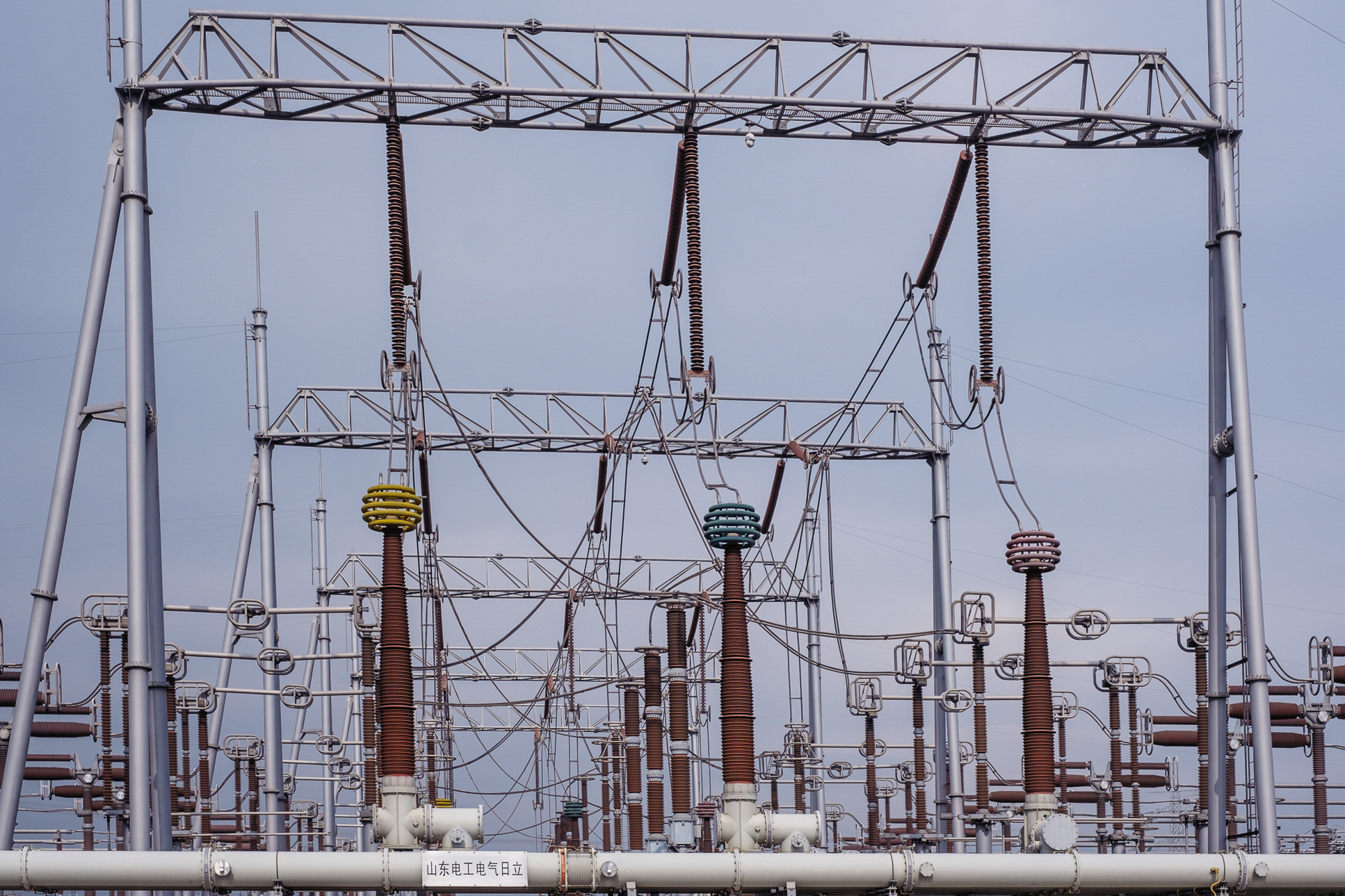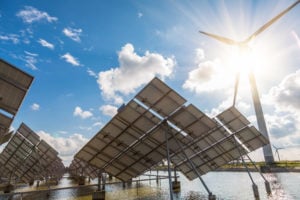With few coal reserves to call its own and winter rains too erratic to rely on hydropower, central China’s Hunan province had long faced frequent electricity blackouts, an annoyance to residents and a hindrance to economic growth. So when an ultra-high voltage power line was approved in 2015, hopes were high.
The new UHV connection would run all the way from the energy-rich Jiuquan region in northwestern Gansu province, and bring in enough coal, wind, and solar power to answer a quarter of Hunan’s energy needs.
At the time, a confident employee of Hunan’s provincial grid operator told state-owned news outlet Economic Information Daily that “after the line is built, we expect Hunan will not have any power shortages for the next 10 years.” At a cost of 26 billion yuan (US$3.9 billion), the 2,383km Jiuquan–Hunan line went into operation in 2017, becoming part of China’s growing UHV network.

In December, when a cold front hit parts of China, that confidence was put to the test. While factories were already running at full tilt to compensate for Covid-19-related shutdowns elsewhere in the world, people turned up their heating – which in the southern half of China often runs on electricity – as temperatures plunged. Hunan authorities predicted an electricity shortage of 3 to 4 gigawatts, or about 10%, for the winter peak season. Apparently unable to increase supply, they reined in demand instead, turning down thermostats in government offices, switching off street lamps, and forcing companies to halt production under rolling outages.
In a report analysing how such power rationing could have been avoided, China Energy News, an outlet overseen by party newspaper People’s Daily, pointed to the persistently underperforming Jiuquan–Hunan UHV line. An anonymous Hunan-based electricity expert told the outlet that it had always been operating at just slightly more than half its planned capacity, leading them to conclude Hunan couldn’t depend on other provinces.
“A relative afar is less use than a close neighbour,” the expert said. “When solving energy shortages, you can only rely on local power sources.”
It was a chilling repudiation of the country’s ambitions for UHV, a technology full of country-spanning potential that has so far been hampered by a Balkanised power system, technological incompatibilities with green energy , and questions of financial feasibility in a future liberalised market.
Expensive and difficult to build, UHV lines transmit energy at 800,000 volts and above, double the voltage of conventional high-voltage lines, allowing them to transmit up to five times more electricity at minimal energy loss along the way. They are seen as the answer to China’s energy imbalance: whereas energy sources, including wind and sunshine, are mostly found inland, much of the country’s population lives toward the coast.
UHV lines should also enable China to rely more on renewable energy, necessary if the country is to make good on President Xi Jinping’s pledge to be carbon neutral by 2060. Piping in power from far away can mitigate the unpredictability of wind and solar energy, making UHV key to combating climate change.
China has been at the forefront of UHV technology for over a decade, with its first such line going into operation in 2009 and a current network of 31 lines. Its building spree shows no signs of slowing down. In a plan published on 1 March, the country’s largest grid operator State Grid said it wants to build another seven lines in the next five years.
But that enthusiasm belies continued disappointment. According to China Energy News, many UHV lines are running at just a bit more than 60% of their design capacity due to technological limits and conflicts of interests between power generators, grid companies and local governments. This figure is an eyesore for the central government. In report after report, the National Energy Administration has implored grid companies to do better.

Shanghai’s distant relative
On the outskirts of Shanghai, amid farm fields and wetlands and within earshot of the sea, stands the city’s sole long-distance UHV converter station, a colorless collection of buildings surrounded by a constantly buzzing forest of metal poles and coils. Zhang Dezhen, an engineer at the station, waves his finger in the direction of the wires that sweep up to soaring towers and disappear into the foggy distance. He explains they connect Shanghai with the Xiangjiaba hydropower dam, 1,900km away in southwestern China’s Sichuan province.
The line, with a maximum capacity of 6.4 gigawatts, can supply up to 40% of the city’s electricity. “This is the most important line in Shanghai’s power system,” Zhang tells Sixth Tone. According to State Grid, the hydropower from Sichuan allows Shanghai to burn 1.3 million fewer tons of coal per year, saving about 2.7 million tons of carbon dioxide emissions annually.
But this, too, could be increased. Zhang says the Xiangjiaba–Shanghai line only operates at full capacity from April to November, warm months when air conditioners drive up energy demand. During Shanghai’s usually mild winters, the State Grid limits the amount of power the UHV line carries. “(We) have to consider the stability of Shanghai’s grid system,” Zhang says. If the UHV line is responsible for too much of Shanghai’s total power supply, any glitch – such as weather damage anywhere along the wire’s trajectory – could crash the city’s grid. “It’s about not putting all the eggs in one basket,” he says.
In early January, the same historic cold spell that earlier overwhelmed Hunan threatened the stability of Shanghai’s power system. Zheng Qingrong, director of the demand response management center at State Grid subsidiary Shanghai Electric Power Company, tells Sixth Tone the company at the time predicted it would face tight supplies and had bought additional power from other provinces. Such purchases sometimes carry a markup, he says.
The city’s UHV line also brought relief. “This winter’s allocation was higher than last year’s,” says Zhang, the UHV engineer. “At the time local Shanghai power stations were already doing everything they could to produce at full capacity.” Though soaring demand in the city of over 24 million people caused some local loss of electricity from overloaded equipment, there was never a shortage.
A month later, the US state of Texas became an example of what can happen without such connectivity. The state famously runs its own grid, which isn’t linked up with the rest of the country. When a winter storm hit – potentially caused by the same climate change-linked phenomenon that caused the frigid temperatures in eastern China – the inability to import electricity was among the factors in the ensuing disaster, Zheng says. Over 4 million people lost power, and hundreds suffered carbon monoxide poisoning when they tried to stay warm by running their cars in their garages.
Further interconnectivity between provinces is the answer to help China’s grid weather the growing challenges posed by surging power demand and unpredictable climate, Zheng says. Currently, provinces are connected in six regional grids and trade some of their power, but mostly according to medium- and long-term contracts. The government aims to increase electricity trading and create a national market. At the same time, State Grid is striving to link more province-level regions to a UHV line – presently six are left unconnected – thus creating a nationwide “super grid.”

Local priorities
But the Hunanese experience and other cases demonstrate how this vision may prove difficult to realise. The Baihetan dam, currently under construction on the Jinsha River straddling the border of Sichuan and Yunnan provinces, is set to become the world’s second-largest hydropower station after the Three Gorges Dam once it is fully completed in 2022. From its inception, it was meant to connect to two UHV lines that would send power to Zhejiang and Jiangsu provinces on China’s eastern coast. The project has been delayed, however, due to a conflict over who owns its electricity.
The dam’s investor and developer, China Three Gorges Corporation, reportedly hoped to transmit the power directly to the receiving provinces – a common, cost-saving approach. But the provinces, after not showing much enthusiasm during the dam’s planning phase, later hoped to get a share of the electricity to benefit their own economies. Sichuan reportedly argued the dam’s power should be first loaded into its provincial grid – whereby the province would earn transmission fees – before being sent east. The province also wanted to keep some of the green energy to help reduce local air pollution, says Yang Fuqiang, a senior Beijing-based expert with Peking University’s Institute of Energy.
In the end, the National Energy Administration sided with the provinces, allowing each to keep 10 terawatt-hours generated by Baihetan and another dam on the Jinsha River every year. The dispute delayed central government approvals, causing much of the construction of the UHV infrastructure – including converter stations and suspension towers – to fall behind schedule. The dam, which will eventually produce 62.5 terawatt-hours of electricity annually, may have to curtail its power for at least a year.
The saga calls into question a central tenet of China’s UHV project: that the country’s east will have energy shortages for which energy surpluses in the west and north can compensate. For years, factories have been moving inland, however, encouraged by government policies as well as increasing labour costs and other costs on the coast. “It’s very noticeable that energy-intensive industries are moving westward voluntarily, because electricity costs much more in the east,” Xu Zheng, an electrical engineer at Zhejiang University, tells Sixth Tone.
As a result, the demand for energy is increasing rapidly in China’s western regions. In 2020, power demand from Yunnan and Sichuan grew by over 5% compared with that of 2019, the highest rise in the country, according to official data. “The big picture is clear that we will need more electricity overall in the future,” Xu says. (Researchers estimate China will see a 60% increase in power use by 2030 compared with 2020). “But would the eastern region still need this much power in the future? Would the west still have enough power to send out? It’s hard to say.”
It’s also unclear how UHV lines would fit into a future liberalised power market. Right now, the electricity they transport are “stiff deliveries” under China’s old-fashioned planning system, says Zhang Shuwei, an analyst with Beijing-based think-tank Draworld Environment Research Center. Power transmitted through UHV lines is commonly delivered in fixed amounts according to fixed prices, based on long-term contracts. As such, while many of the receiving provinces are trialing liberalized power markets, power imported by UHV lines is often guaranteed a certain amount of use regardless of market circumstances. “The operation of the lines is not considering the dynamics of supply and demand at both ends,” says Zhang Shuwei. “It is basically a privileged line.”

Getting greener
Increasing the usage rates of UHV lines in turn promotes the production of green energy in China’s sunny and windswept western regions, a central government priority. But in its latest inspection report, the National Energy Administration notes that the amount of green energy transported by UHV lines remains subpar. In the plan it published in early March, the State Grid promised to increase the share of clean energy, including hydropower, in its long-distance power transmission project to 50% by 2025, up from 43% during the five-year period ending in 2020. And while rivers are currently China’s main green electricity source, Xu of Zhejiang University says there isn’t much more hydropower left to develop in the country. “Further increase of the clean energy share has to rely on adding more new energy (like solar and wind),” he says.
China’s renewable energy law requires governments as well as the State Grid to prioritise green electricity, but loopholes mean the law is treated “more as a guideline,” David Fishman, energy consultant at The Lantau Group, tells Sixth Tone. Using power produced elsewhere can run counter to local interests in recipient provinces. “The receiving provinces or regions don’t really have the incentive to absorb the wind and solar and to adjust their own operation,” says Lauri Myllyvirta, lead analyst at the Helsinki-based Centre for Research on Energy and Clean Air. “They don’t want to import from other provinces. They want to produce as much as they can themselves to maximise local GDP needs.”
There are also technological reasons why UHV lines so far haven’t been able to incorporate much green electricity. Currently, most cannot transmit the unevenly produced wind and solar energy alone but need it to be bundled with power from more stable sources, such as coal and hydropower. A pure-green energy mix presents a risk, as its supply could suddenly drop and threaten grid stability. “The ratio of wind over conventional energy is quite low, usually accounting for one-third of the mix,” says Xu. He says that a new generation of UHV lines can, scientists theorise, handle solar and wind variability. But China’s only such line is being used to transport hydropower, and so the theory remains untested outside the lab.
Another technological solution is pairing renewables with storage, which makes their output less variable and thus more usable by UHV lines. At least six Chinese provinces have so far made storage facilities mandatory for new green energy projects, even though critics say that, with current battery costs, the added expense prices them out of the market. Qinghai, a sparsely populated province in the northwest with plenty of wind and sunshine, offers a subsidy for such projects in compensation.
Meanwhile, the share of renewable energy in China’s power production will almost certainly rise. To reach its 2060 carbon neutrality goal, China has pledged to increase the share of consumed non-fossil fuel energy to 25% by 2030, up from 15% in 2019. Falling prices are also making renewable energy the cheaper choice. “In terms of the economy, renewables are quite competitive,” Wang Fei, an energy expert at the North China Electric Power University, tells Sixth Tone. It poses a challenge to UHV lines. “If they can show that these lines are running on clean electricity, it will be something that will make China a leader in this, because a lot of other countries find it very difficult to build these kinds of transmission projects,” says Myllyvirta, of the Centre for Research on Energy and Clean Air.
On 2 March, financial magazine Caixin Global reported that China’s oldest UHV line, between northern Shanxi and central Hubei, could, after 12 years, finally start running closer to its full capacity.
The news came courtesy of a brand-new coal-fired power plant, specifically designed to supply the UHV line with electricity. It had earlier been held up as part of efforts to rein in China’s coal use, but, in 2019, construction was allowed to resume.
This article was first published on Sixth Tone. The editor was Kevin Schoenmakers, with contribution from Liu Chuyue.








